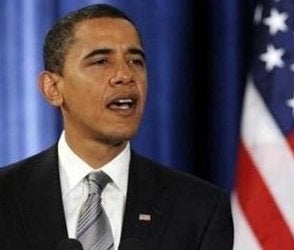
There are three serious dangers in the debate about the stimulus package. The first is that President Obama will think too small. The second is that he will think too bipartisan. The third is that the public will be swayed by myths, such as the claim that infrastructure spending just takes too long to gear up, or that the deficit is the paramount problem.
The economy is now collapsing at an accelerating rate. With the 2008 job loss at the worst annual level since 1945, and even sound businesses unable to get ordinary credit from a traumatized banking system, this will quickly become a classic downward depression spiral unless government acts at a very large scale, and fast. The GDP probably shrank at a rate of at least five percent in the fourth quarter of 2008, and the nosedive will be worse this quarter.
There is simply no good news anywhere in the economy, as the costs of the financial crash keep reverberating. Yet a stimulus in the range of $400 billion a year is less than three percent of GDP. (It's bizarre that the incoming administration uses two-year numbers. They only make the figure sound too large, rather than too small.)
The reality is that we need additional spending of at least a trillion dollars a year for at least two years. The only encouraging sign is that more and more mainstream economists and Democratic politicians are starting to say that the greater risk is that we will aim too low rather than too high. Even Martin Feldstein, who chaired Ronald Reagan's Council of Economic Advisers, is a born-again Keynesian.
My educated guess is that the first stimulus package will be too small, and that as the economy-wide collapse deepens, we will be back for a second one by April or May. That would be a shame. It would be far better to have adequate stimulus now.
The Perils of Post-Partisanship
In the past week, the incoming administration has sounded almost desperate in its eagerness to enlist Republicans. First, Obama offered huge concessions in the form of business tax write-offs. Then he signaled a willingness to negotiate limits on Social Security and Medicare. While it may make some sense to reward businesses for creating jobs or for not cutting them, the idea of allowing corporations to write off more past years' losses on their current taxes is mainly a reward to the same banks that got us into this mess. Tax cuts should be part of the package, but they should go to working families.
Politically, the likelihood is that the Republicans will take whatever concessions they can get from Obama, and then try to block the spending parts of the package. Obama genuinely hopes to reach across partisan divides--it's part of his make-up--but he may have to get bloodied a few times before he realizes the folly of this approach. It would be far better for him to draft the stimulus package that he wants and that the country needs than to compromise with implacably opposed Republicans going in.
The fact is that he has a much stronger hand than the Republicans do. Families and businesses, mayors and governors, are hurting in red states as much as they are in blue states. If a trillion-dollar stimulus package is pending before Congress and unemployment is rapidly heading towards double digits, he should dare the Republican leadership to try to block it. In such circumstances, it should not be difficult to peel off the two or three senate Republicans he needs to break a filibuster.
Every reformist president has faced an early test of resolve, usually a partisan one. John Kennedy has to win a fight, by three votes, to enlarge the House Rules committee, which had been a graveyard of liberal legislation. Bill Clinton won his first budget vote, raising taxes on the top two percent, by one vote in the House with Vice President Al Gore breaking a tie in the Senate, and Republicans united in opposition. FDR needed all of his persuasive powers to rally the country and the Congress behind the fifteen great bills of his first hundred days, as did Lyndon Johnson on civil rights.
Nothing would enhance the credibility of the president-elect as much as a decisive win on the stimulus, over the opposition of conservative Republicans. If sensible Republicans want to vote with the new president, more power to them - and to Obama.
But this victory will take all of Obama's skills of leadership, and then some. He needs to explain to the people why public outlay of this scale is urgently needed, and increase the pressure on Congress to support it. At this point, however, the cause and effect are running the other way. Progressives in Congress are urging Obama to think bigger, and not to cave in to the Republicans in the name of a hollow bipartisanship.
Rep. Barney Frank recently told me, "The said this post-partisan stuff was just for the campaign. I think maybe he believes it." But Obama is no fool. Post-partisanship will last only until it's clear that Republicans will try to wreck his presidency--and they will.
Yes, We Can Spend It Well.
The most disabling myth, which you hear over and over again, is that the government can't competently spend large sums of money fast enough, and will end up building bridges to nowhere. "Infrastructure," as the main supposed form of public spending, is getting far too much attention, and is being used as a straw man to discourage adequate outlay.
Here is a trillion dollars of stimulus that can take effect instantly, and another trillion that can take effect over the course of eighteen months. For Part I, the only planning process necessary is for government to start writing checks. The estimated costs are approximations:
Part I.
1. Make sure state and local governments don't lay off a single worker or cut back a single existing program. Approximate Cost: $200 billion. Benefit: big loss to communities and workers is avoided. Capacity of local government to fight recession is enhanced.
2. Add emergency revenue sharing to states and cities by picking up half of the state share of Medicaid, which has suffered drastic cuts in eligibility and coverage. Cost $100 billion. Benefit: states can restore Medicaid benefits to more people and can get some general budget relief.
3. Have government temporarily pay most of the cost of COBRA coverage for laid off people who lose their health insurance, and allow people over age 55 to buy into Medicare. Cost: $100 billion. Benefit: unemployed people keep their health coverage, people in late middle age can buy affordable insurance, while Congress debates out how to get universal health insurance for all.
4. Expand Unemployment Insurance to cover part time workers, extend eligibility period, and increase benefit levels. Cost $50 billion. Benefit: people thrown out of work at a time of rising unemployment get more nearly adequate income support.
5. Roll back tuitions at state universities and community colleges, and increase Pell Grants--contingent on universities not increasing costs to students. Cost: $100 billion.
Benefit: young people spend the recession in college rather than clogging unemployment rolls or graduating with huge debt burdens. Colleges are spared the need to cut programs and lay off people in a recession.
6. Declare a temporary holiday on the worker share of the Social Security tax, and have government make up the loss to the trust fund, contingent on employers not cutting wages. Cost: $450 billion. Benefit: an immediate raise of 6.2 percent for all workers, with the benefit being tilted downward, since moderate income workers pay more in payroll taxes than in income taxes.
Total cost: $1 trillion.
Stimulative Effect: Instant.
So the idea that the government can't spend adequate sums efficiently or quickly is nonsense. Then, during 2009, state, local, and federal government can begin planning programs that take a little longer to realize, though the rollout could begin by summer 2009 and continue into 2010.
Part II:
7. Continue many of the Part I relief programs into a second year, as economic conditions warrant. Cost: $500 billion. Benefit: the momentum of the overall stimulus is maintained.
8. Use direct federal lending to refinance distressed mortgages, and as necessary reduce the outstanding principal amount. This can begin by mid-2009. Cost: $200 billion of subsidy; most additional debt is eventually repaid. (Roosevelt's Home Owners Loan Corporation returned a modest profit to the Treasury.) Benefits: some three million at-risk homeowners don't lose their homes. We finally put a floor under collapsing housing prices. Bondholders and banks that bought toxic mortgage-backed securities realize at least something on their investment, which currently has a market value of zero.
9. Begin planning immediately for a broad range of infrastructure programs, from traditional outlay on roads, bridges and mass transit to spending on 21st century infrastructure such as retrofitting homes, green energy, universal broadband, and smart-grid electricity systems. Spend money on worker training as necessary. Cost: $300 billion. Benefit: a more competitive economy and the generation of millions of domestic good jobs.
Total stimulus is two trillion dollars over two years, or about seven percent of GDP a year. If we spend at this level, we can avoid the worst, and a recovery can begin by 2010. Along the way, we will make life better for a lot of working and middle class people, create (or prevent the destruction of) millions of decently-paying jobs, and rebuild public systems that have gone to ruin.
A secondary benefit is that people start believing in government again. As the economy returns to normal, it should never return to the kind of unequal bubble economy that created the mirage of prosperity in the 1990s and the first part of this decade. Many of these programs should not end after 2010. We need a permanent increase in public outlay to pay for adequate levels of public and social investment. But once the worst of the recession is behind us, the increased spending should be paid for by higher taxes on wealthy people so that the budget can be close to balance over the long term. As the economy returns to broad prosperity, the ratio of public debt to GDP begins declining as it did after World War II.
Will Obama reach for the stars and embrace a program this bold? He may suffer a few partisan defeats first, and he may find himself chasing a deepening depression downward. But my guess is that eventually will get there. Let's hope that it's sooner rather than later.
Robert Kuttner is author of "Obama's Challenge: America's Economic Crisis and the Power of a Transformative Presidency," and co-editor of The American Prospect.
